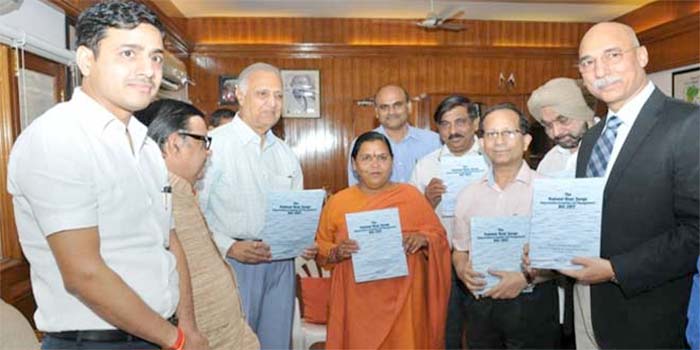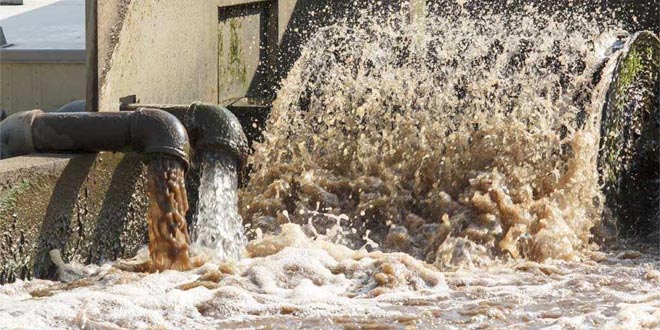Highlights
- The Namami Gange project has been sluggish progress till now
- State committees to aid in streamlining of funds
- Construction of STPs remains a matter of concern
Namami Gange, a flagship project of Prime Minister Narendra Modi’s government was announced amidst much appreciation in 2014, as its primary focus was to eliminate all sorts of pollution from the Ganga and restore the river to its lost glory. Armed with a budget of Rs. 20,000 crore for five years, the project was touted as a holistic conservation mission. But the project itself progressed sluggishly, taking two years to get launched and requiring the intervention of the Prime Minister himself recently. One of the consistent problems of the project has been the lack of coordination between the National Mission for Clean Ganga (NMCG) and the five states of Uttar Pradesh, Uttarakhand, West Bengal, Bihar and Jharkhand. However, the scenario seems to be gradually changing as State Ganga Rejuvenation, Protection and Management Committees were recently formed in the states of Jharkhand, Uttar Pradesh and Uttarakhand.
Without the presence of committees at the state level, it becomes difficult to streamline work, allocate funds and monitor the progress of the work, says the Union Ministry of Water Resources. The order for creation of these state level committees was approved by the Union Cabinet under the River Ganga (Rejuvenation, Protection and Management) Authorities Order, 2016. The same order had declared National Mission for Clean Ganga (NMCG) as an Authority with powers to issue directions. Unfortunately, differing political equations between the Union Government and the states of Uttar Pradesh, Uttarakhand, Bihar and West Bengal resulted in delay of the formation of these local management committees.
The formation of new governments in Uttar Pradesh and Uttarakhand has promptly resulted in the formation of management committees which were due to be formed in 2016. Jharkhand has also adhered to the rules and formed a similar committee. Only Bihar and West Bengal are yet to send recommendations for the State Ganga committees, said Samir Sinha, Spokesperson, Ministry of Water Resources.
Role Of The Committees
There hasn’t been a dearth of committees related to the cleaning and rejuvenating of Ganga ever since the Ganga Action Plan was launched by former Prime Minister Rajiv Gandhi in 1986. In 2016, the government formed the Madhav Chitale committee to check the desiltation of the river, as well as constituted a committee headed by former Justice Giridhar Malviya to prepare a draft Ganga Act which will help in the implementation of Namami Gange’s objectives. Where do the State Ganga committees come in amidst so many existing committees?
Also Read: Ganga Clean-Up Lags Behind, PM Modi Takes Charge
The State Ganga committees will work at a local level. One of the reasons why Namami Gange project is yet to achieve considerable success is the lack of cooperation and coordination between the Centre and the State. The State level committees will track the funds received by the respective states under the Namami Gange programme and coordinate with local bodies in the cleaning up of river banks, building of crematoriums, identifying land for the building of sewage treatment plants and other work related to the programme, said Mr. Sinha.
With the formation of the committees in Uttar Pradesh and Uttarakhand, two of the most crucial states for Namami Gange, as a combined length of 1500 kilometres of the river flows through these states, the Ministry can breathe a sigh of relief. UP Chief Minister Yogi Adityanath has already proposed the shifting of tanneries from Kanpur, which are a major polluting source for the river. The committees are also expected to meet regularly among themselves and send regular reports to the NMCG so that real time monitoring could be implemented under Namami Gange.
Too Many Committees?
A growing concern among Ganga experts is the formation of too many committees under the Namami Gange programme. There are 6 committees at present under various ministries working on the Ganga at present. From a committee on desilting to state level committees, the number of committees under the Namami Gange programme only keeps increasing despite the project not displaying expected results. Will the state level committees truly be effective or similar to committees like the National River Conservation Committee, which did not meet once from 2003 to 2014, will fall apart?
There is a fundamental difference between forming committees and their functioning. Committees often find it difficult to function because there is no coordination between the members. Also many committees on Ganga cleanup over the years has failed to gather report from local authorities on the work’s progress. Maybe state level committees can finally get consolidated reports and hand it over to NMCG, said Professor A.K. Gosain, member of the Draft Ganga Act Committee.
It must be noted that the State level committees are yet to be formed in West Bengal and Bihar, two states which account for nearly 1,000 kilometres of Ganga’s length. Without due cooperation from these two states, checking the flow of human and industrial waste into the Ganga basin and construction of new STPs will post challenges for the Namami Gange programme. Differing political equations between the Centre and the states of Bihar and Bengal may result in the progress under Namami Gange for these particular two states.
Conclusion
Though 2018 is the deadline announced for a clean Ganga by the Union Water Resources Minister Uma Bharti, the slow progress of Namami Gange has made it quite difficult for its objectives to be implemented by October 2018. One major achievement under Namami Gange however, has been the eradication of open defecation from 4,146 villages along the Ganga basin. The major challenge lies in the setting up of STPs, as state governments have found it difficult to find and allocate lands. Complications related to bidding for the construction of STPs have also seen private corporations showing decreased interest in the cleaning up mission.
2018 looks like a difficult deadline for the Namami Gange project, considering how it was already two years late in beginning the programme. Not much work seems to be done since the project was announced in 2014. These state level committees should immediately look to shut down tanneries and build functioning STPs to ensure that there is a two-fold approach in tackling the pollution in Ganga. Without these two agendas, these committees will produce no results, similar to the numerous ones formed in the past, said Rakesh Jaiswal of Eco Friends, a Kanpur based NGO.


























